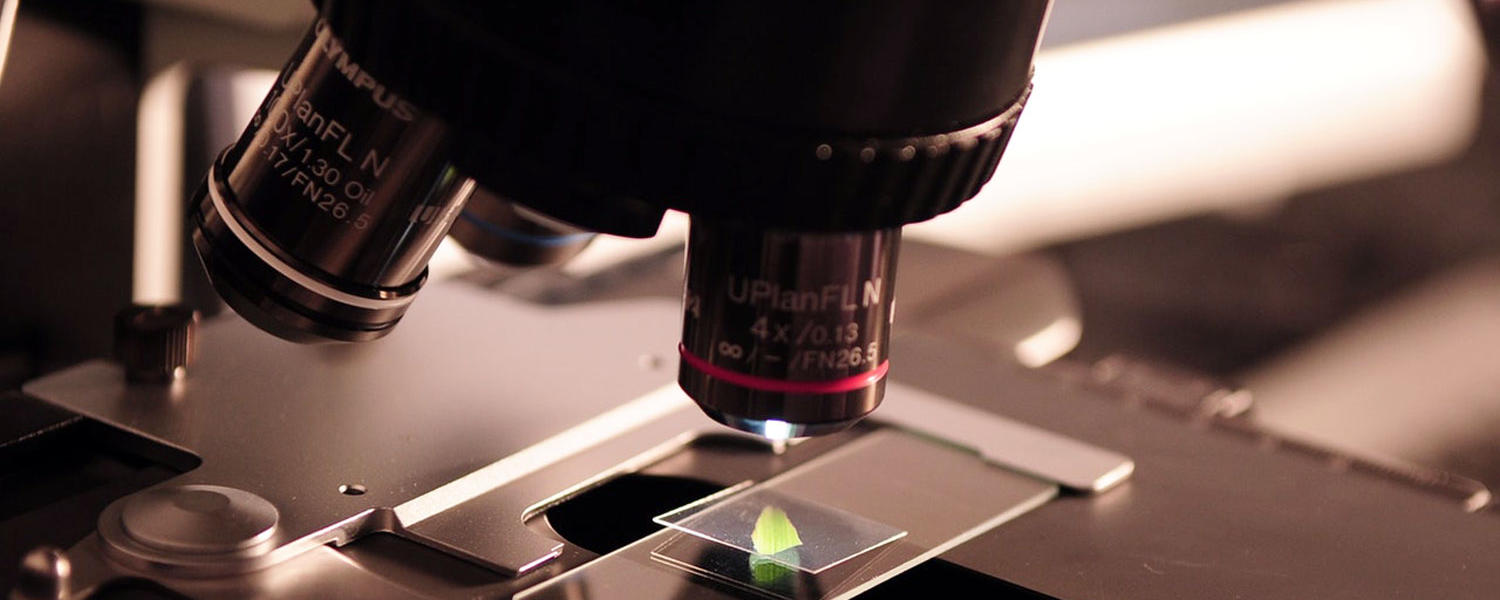
State of the art research infrastructure
DNA Extraction and Analysis
The Agilent 2100 Bioanalyzer is used during library preparation for next generation sequencing with the Illumina MiSeq. It makes use of microfluidics to determine DNA quality and fragment length distribution. In principle it is an advanced form of gel electrophoresis.
The digital PCR (dPCR) system is a quantitative method to measure specific DNA or RNA amounts. dPCR is a simple and reproducible method that does not rely on a calibration curve for sample target quantification. While PCR carries out one reaction per single sample, dPCR carries out the same single reaction, however, the sample is separated into many partitions and the reaction is carried out in each partition individually. This separation allows a more reliable collection and sensitive measurement of nucleic acid amounts. This method has been demonstrated as useful for studying variations in gene sequences and clonal amplification of samples for next-generation sequencing.
The digital sonifier has 3 parts: converter, disruptor, and probe. This apparatus is ideal for cell disruption, nanoparticles, chip assay, emulsification, homogenization, cell lysing, processing DNA and proteins, acceleration of reactions, leaching and extraction, and fine mixing degassing. The sonifier takes advantage of multiple modes of operation, including continuous, pulsed, timed, and temperature end-point.
The thermocycler is also known as the PCR machine, or DNA amplifier. It is most commonly used to amplify segments of DNA via the polymerase chain reaction (PCR). The cycler raises and lowers the temperature of the heating block in discrete, preprogrammed steps. This apparatus can also be used to facilitate other temperature-sensitive reactions, including restriction enzyme digestion.
The Illumina MiSeq is a benchtop next generation DNA sequencer. The most used application in the EBG group is 16S/18S rRNA amplicon sequencing, which provides information on who is there in biological samples. Sediment, soil, reactor and culture samples are typically extracted using Qiagen DNA extraction kits but in specific cases the phenol/chloroform method is also used. After extraction, amplicons are generated by PCR using primers targeting Bacteria, Eukarya, and/or Archaea. DNA libraries for sequencing are created in a second PCR reaction. The Miseq generates clusters of DNA strands using solid phase PCR bridge amplification. DNA is then sequenced using fluorescence scanning and the data is compiled and sent to our in-house server. Data produced by the Miseq instrument is usually processed using the in-house online platform MetaAmp, which performs quality filtering, clusters reads into operational taxonomic units, or creates amplicon sequence variants, taxonomic classification, and analyzes alpha and beta diversity.
The bead ruptor is a powerful tool specifically designed for grinding, lysing, and homogenization of biological samples prior to molecular extraction. Using sample tubes pre-filled with lysing beads, the bead ruptor vigorously and uniformly shakes the tubes providing an efficient, consistent, high-yield, and quality homogenization in as little as 40 seconds.
This is a different DNA sequencing technology which compliments Illumina sequencing. It provides a smaller number of very long sequence reads which improve DNA assembly in complex biological samples. It consists of ‘flongle’ and ‘minION’ flow cells as well as a dedicated GPU based server for data collection and flow cell conditioning. Nanopore sequencing works by passing DNA through nanopores, while recording the voltage over those pores, a signal that responds differently to the four DNA bases.
The Qubit by Invitrogen is a bench top instrument used for quantification of DNA, RNA, and protein. The Qubit fluorometer uses fluorescent dyes to determine the concentration of either nucleic acids or proteins in your sample. New illumination and detection technologies allow you to use as little as one microliter of still and still attain high levels of accuracy, even with dilute samples.
The PikoReal Real-Time (RT) PCR system is a gene quantification and genotyping machine in 24- and 96-well block formats. Using the system’s software, it is applicable to absolute quantification, relative quantification, melt curve analysis, high resolution melt analysis, and allelic discrimination. It is more sensitive than microarrays in detecting small changes in expression.
The transilluminator is located in our molecular biology lab to view DNA (or RNA) that has been separated by electrophoresis through an agarose gel. After the gel is stained with a fluorescent dye which binds to nucleic acids, the gel is exposed to UVB light source that causes the DNA-dye to fluoresce and become visible. This is used whenever the researcher needs to view their sample, such as sizing a PCR product.
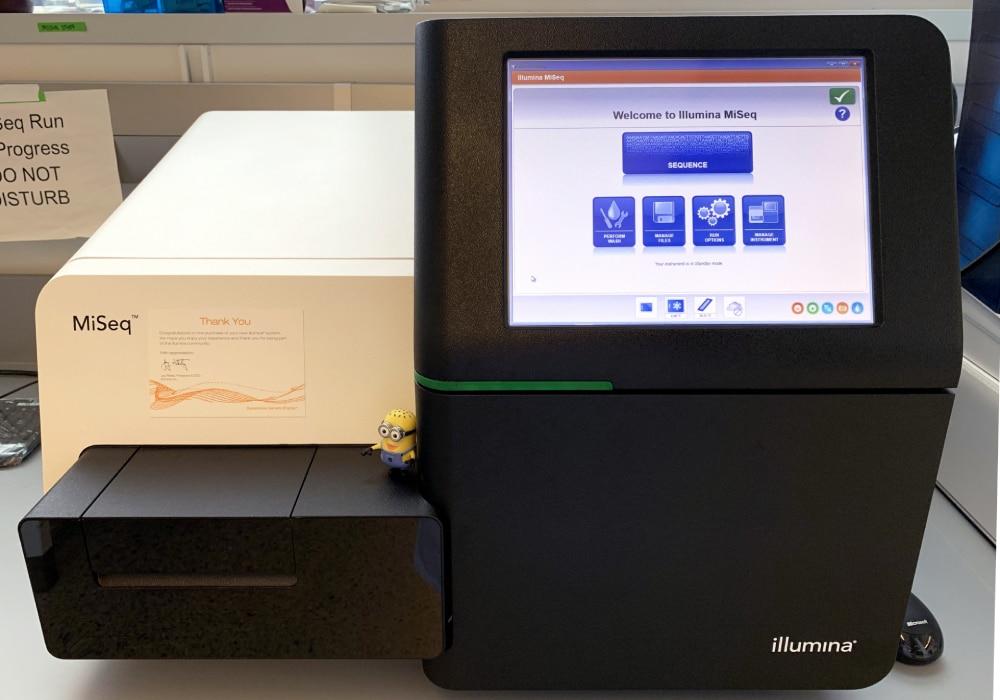
Illumina Miseq System
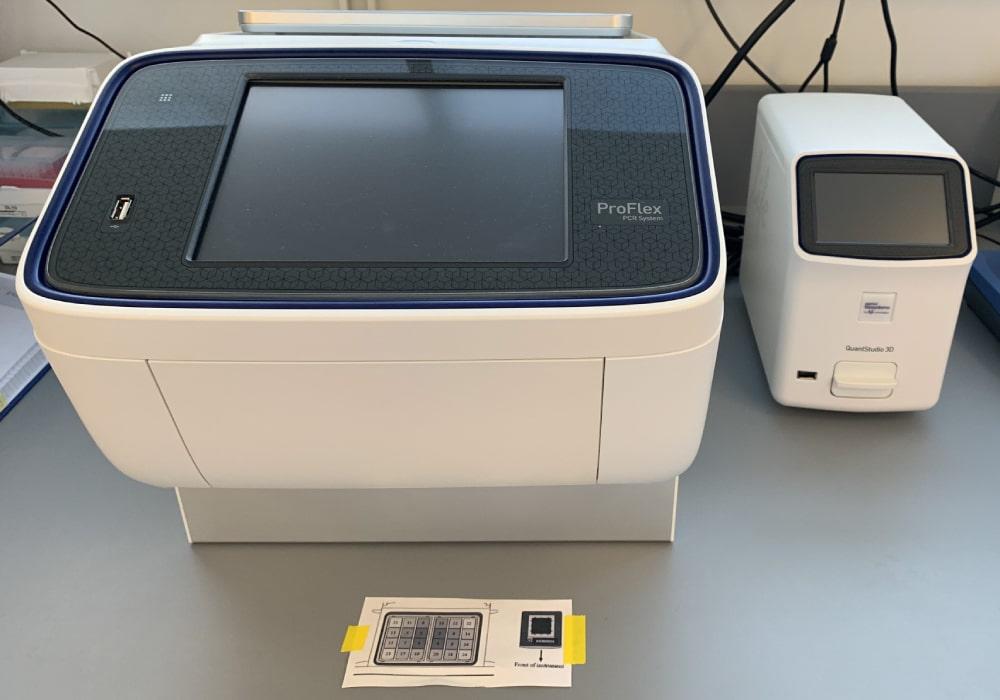
Applied Biosystems Proflex Digital PCR System
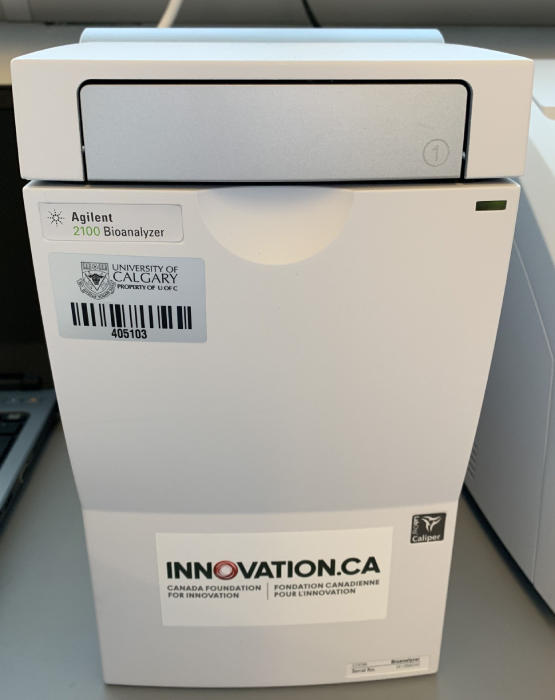
Agilent 2100 Bioanalyzer
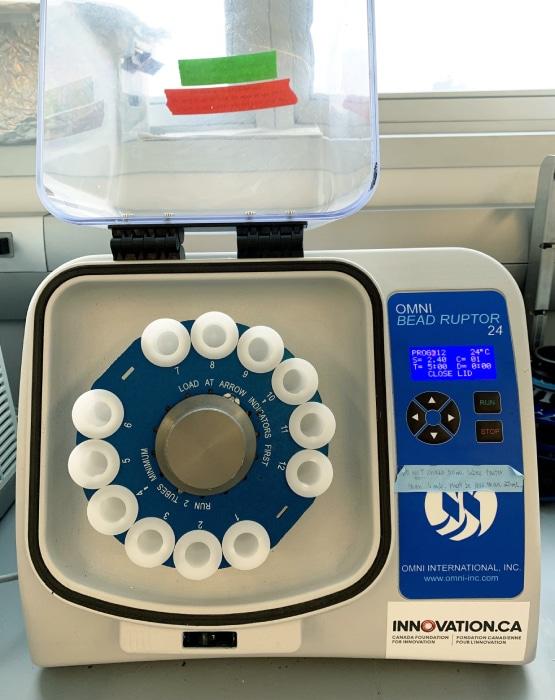
Omni Bead Disruptor
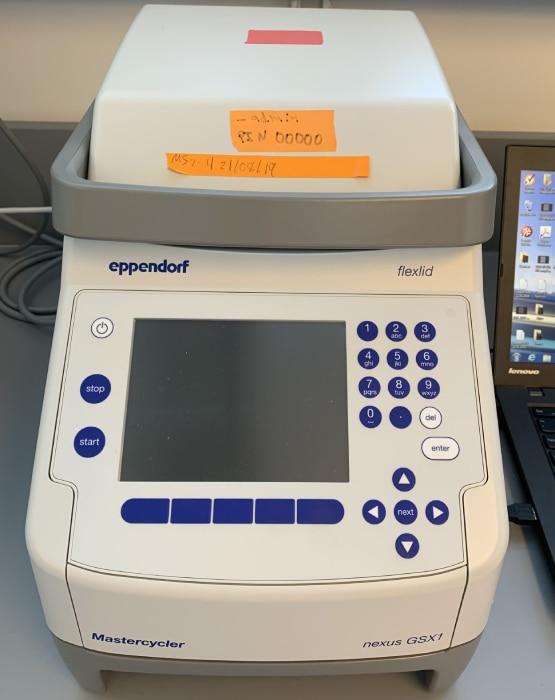
Eppendorf Mastercycler GSX1
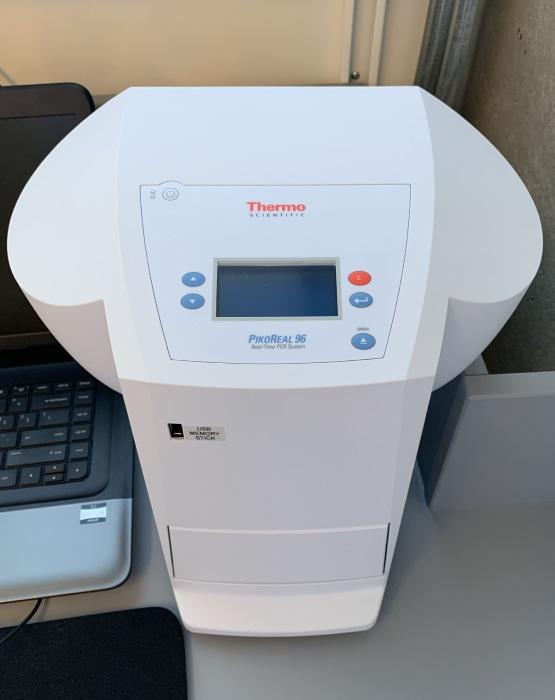
Pikoreal Real-Time PCR System
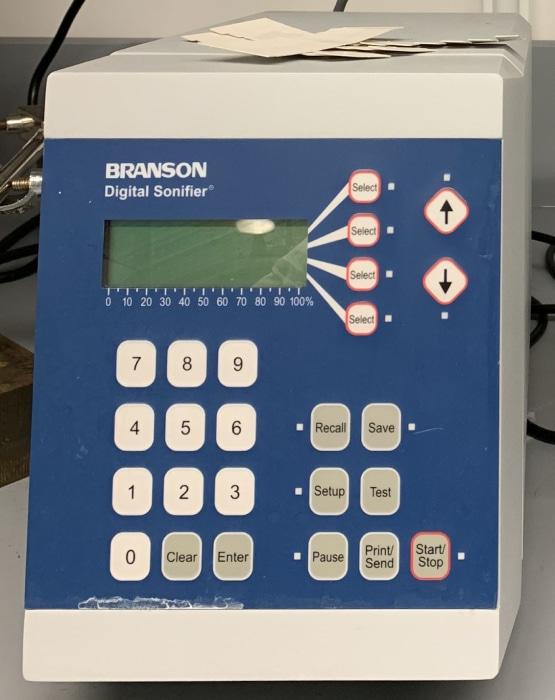
Branson Digital Sonifier
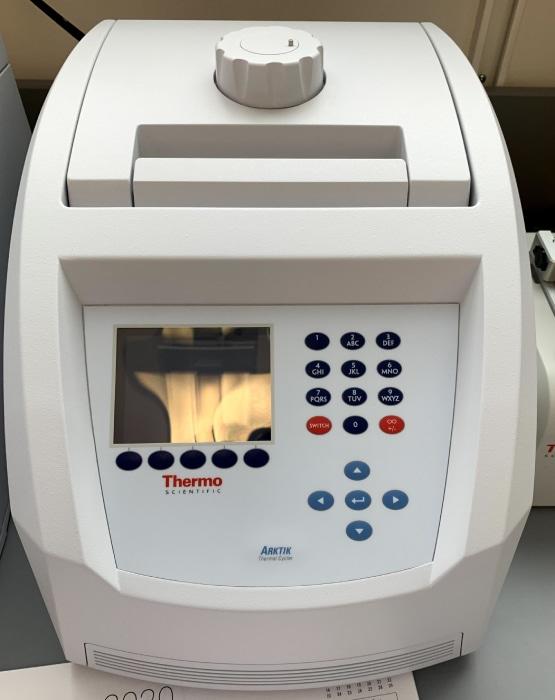
Thermo Scientific Arktik Thermocycler
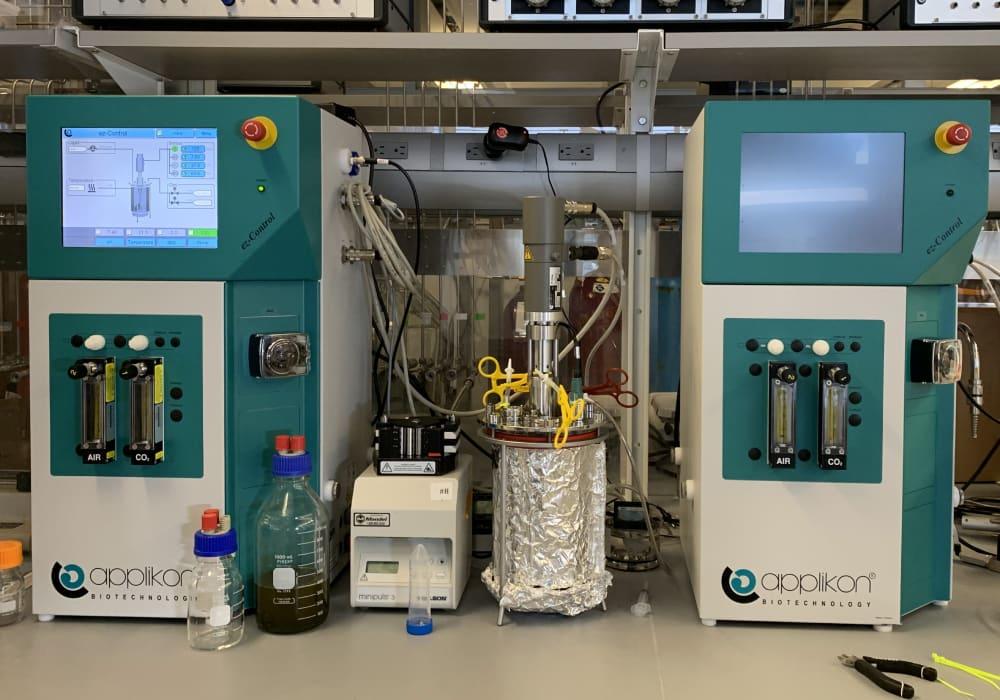
Applikon Biotechnology Bioreactors
Bioreactors
The bioreactors are the core equipment of the Energy Bio-Engineering group. The extensive bioreactor facilities allow us to investigate many different bioprocesses in parallel and create dynamic processes with advanced process control. Typically, when developing a new bioprocess we would start with a vision of what the full scale process will ultimately look like and down scale that process into a laboratory bioreactor. Bioreactors can contain suspended bacteria, biofilms, aggregates, whatever is most suitable. We develop bioprocesses for environmental or energy applications and make use of microbial communities instead of pure cultures. The unique aspect of our group is that we combine the bioreactor engineering with metagenomic characterization of bioprocesses and make use of these molecular data for optimization, troubleshooting and to create IP. While the ez-Control accurately controls pH, temperature, dissolved oxygen, foam/level and agitation in bioreactors and fermenters. The color touch screen interface guides the user through the intuitive operation.
Chromatography Systems
The 5977A MSD is a single quadrupole mass spectrometer combined with a custom assembled heated direct injection port. This instrument is used for continuous monitoring of gasses such as oxygen and methane in gas streams.
This is a valved gas chromatograph mainly used to quantify inert gasses (e.g. oxygen, nitrogen, carbon dioxide, hydrogen, nitrous oxide) and volatile hydrocarbons (e.g. methane, ethane) in gaseous samples. It is equipped with flame ionization detector (FID), electron capture detector (ECD), and thermal conductivity detector (TCD).
Ion chromatography is a form of liquid chromatography, measuring concentrations of ionic species by separating them based on their interaction with a resin. Sample solutions are passed through a pressurized chromatograph column where ions are absorbed by column constituents. As an extraction liquid, known as eluent, runs through the column, the absorbed ions begin separating from the column. This ion chromatography system fitted with an anion column can measure concentrations of major anions, such as fluoride, chloride, nitrate, nitrite, and sulfate. Concentrations of organic acids can also be measured using cation chromatography.
The high-performance liquid chromatography (HPLC) is a chromatographic technique used to separate a mixture of compounds. The main purpose is to identify, quantify and purify the individual components of the mixture. In small amounts, the sample mixture is sent into a stream of mobile phase flowing through a column. The times at which a specific analyte emerges from the column is the retention time, and is considered as one of the identifying characteristics of a given analyte.
The highly-sensitive fluorescence detector is ideal for analysis of carbohydrates, glycans, and polyaromatic hydrocarbons (PAHs). A number of small molecules (ex. acids) can be analyzed using metal chelation. Our fluorescence detector is connected with the Thermo Scientific Dionex UltiMate 3000 UHPLC system.
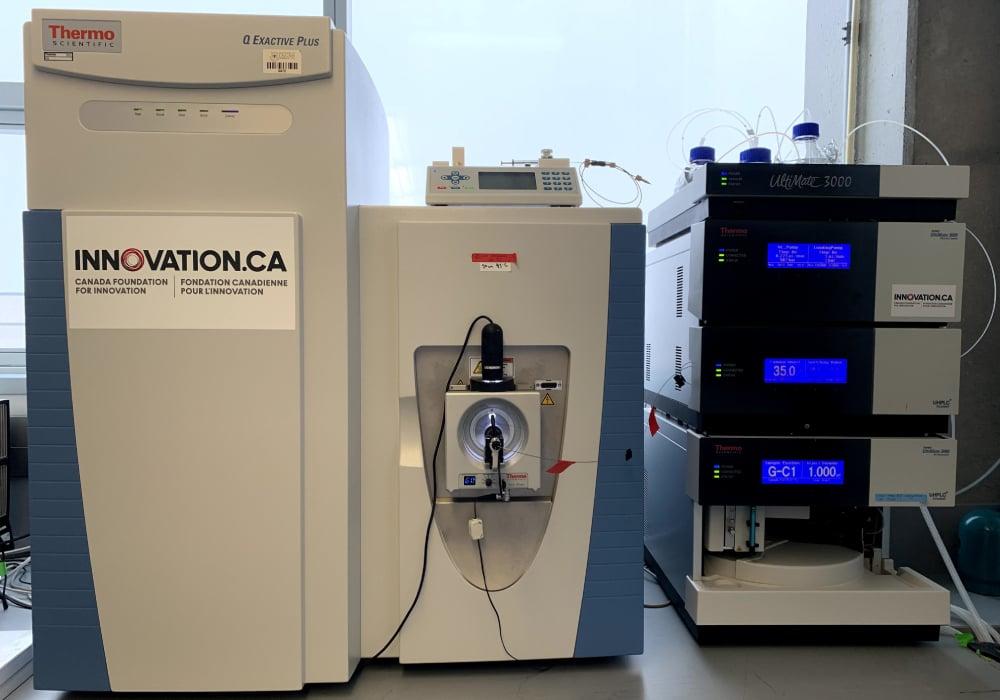
Q Exactive Plus Hybrid Quadrupole-Orbitrap Mass Spectrometer (moved to a core facility)
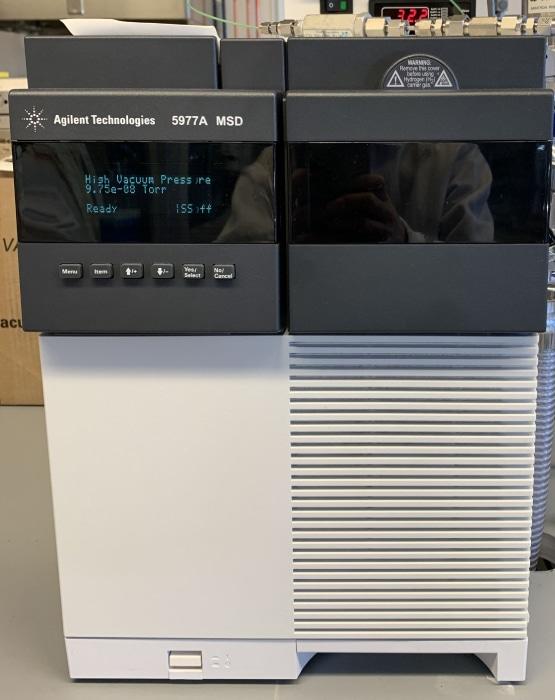
Agilent 5977A Mass Selective Detector
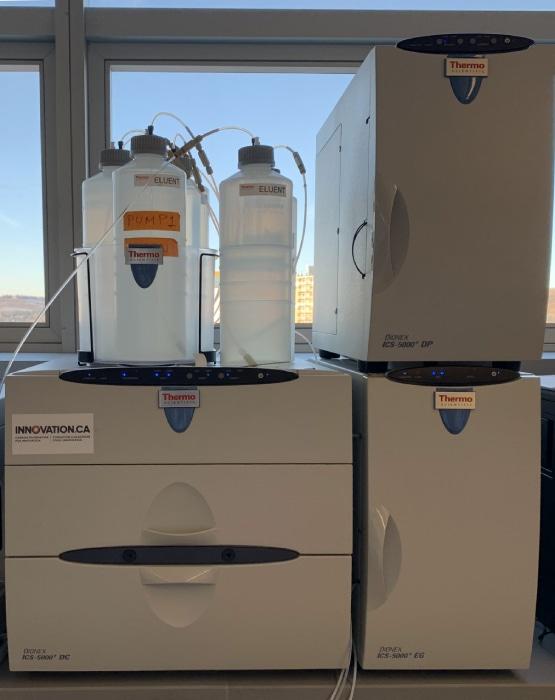
Thermo Scientific Dionex IC System
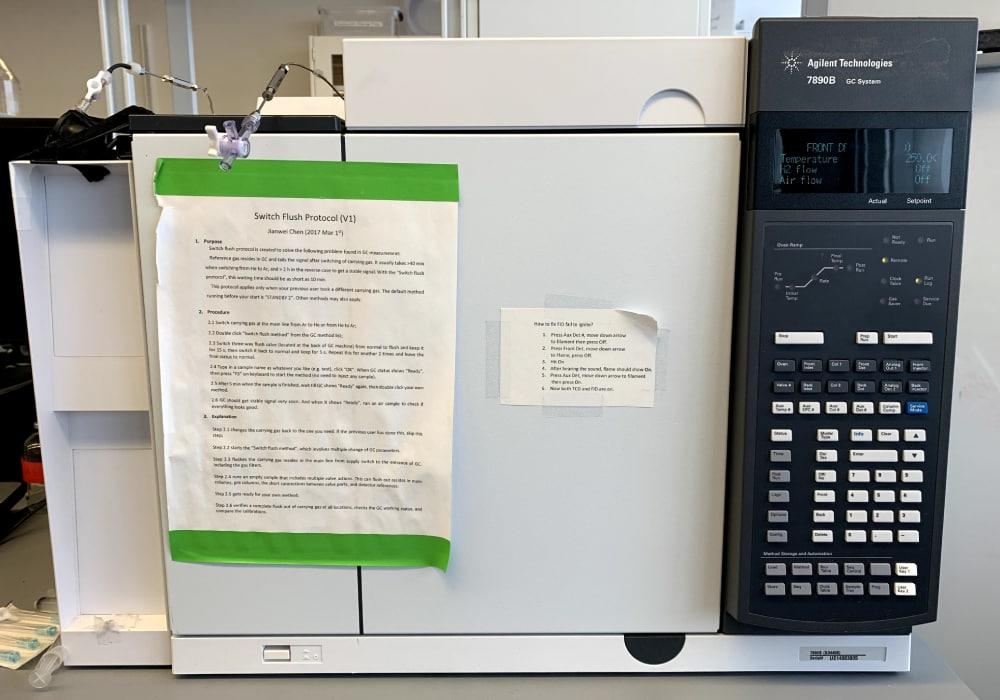
Agilent Technologies 7890B Gas Chromatography System
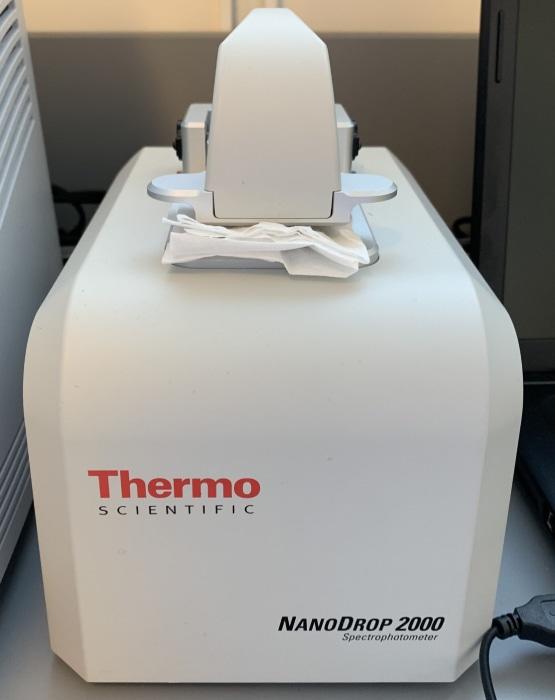
Thermo Scientific Nanodrop 2000
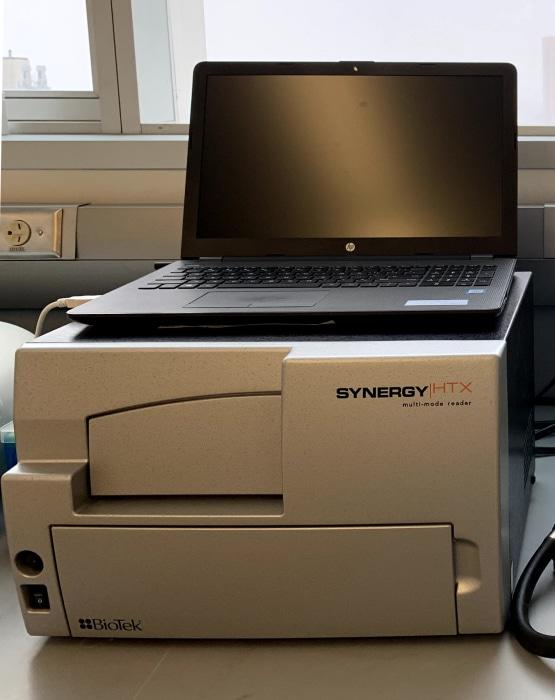
Synergy HTX Multimode Plate Reader
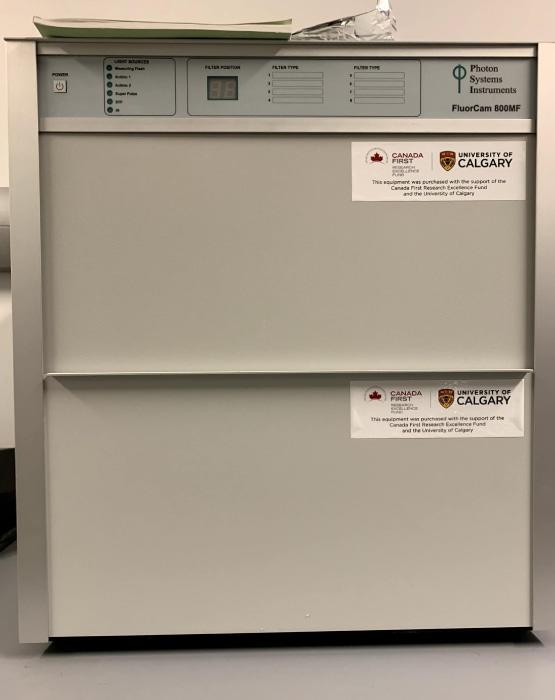
Photon Systems Instruments Closed FluorCam FC 800MF
Spectrophotometers and Fluorometers
The UV-Vis Spectrophotometer is considered an important tool in analytical chemistry. This is a commonly used tool for the qualitative analysis and identification of chemicals in colorimetric assays. It measures the intensity of light after passing through a sample and compares it to the intensity of light before it passes through the sample.
The FluorCam is best for imaging of chlorophyll fluorescence kinetics. This device can be used for characterizing the photochemistry of phototrophs such as cyanobacteria and plants to enable estimation of photosynthetic efficiency and determination of the saturation irradiance. This instrument is an imaging system suitable for spatial analyses of microbial mats, for instance.
The Synergy HTX Multi-Mode Plate Reader is a device used to detect chemical, biological, or physical reactions by measuring emitted light. The system is able to automate absorbance, fluorescence, luminescence measurements with great sensitivity. The plate reader provides superior performance in all detection modes using a unique dual optics design: a filter-based fluorescence optics and a monochromator-based UV-Vis absorbance optics that offers 200-999 nm measurements without filter requirements. The combination of independent optics allows multi-mode measurements without compromise. The plate reader can help minimize operational time and save costs, allowing our scientists to dedicate more time to data analysis.
The NanoDrop is a spectrophotometer used to quantify nucleic acid concentrations in sample volumes as low as one microliter. What makes this spectrophotometer unique is its sample retention technology that overcomes the need for cuvettes when taking measurements. This device will perform full-spectrum UV-Vis absorbance analyses (220-750nm) and is designated for use in the facility for measuring absorbance of DNA, RNA, microarray labeling dyes, and proteins.
Radioisotope Analysis
The liquid scintillation counter (LSC) provides high performance for laboratories detecting and measuring ionization radiation by using the excitation effect of incident radiation on a scintillation material. Scintillation is an emission of light produced in a transparent material by the passage of a particle, whether it is an electron, an ion, or a high-energy photon. The basic principle of operation involves the radiation reacting with a scintillator, which produces a series of light flashes of varying intensity, and the intensity of the flashes is proportional to the energy of the radiation.
The radioisotope lab is equipped with the apparatus and equipment needed for performing distillation procedures with radiolabeled 35S sulfate for determining the rate of sulfate reduction in soils and sediments. The cold chromium distillation process yields higher radiotracer detection levels while reducing the amount of background radioactivity.
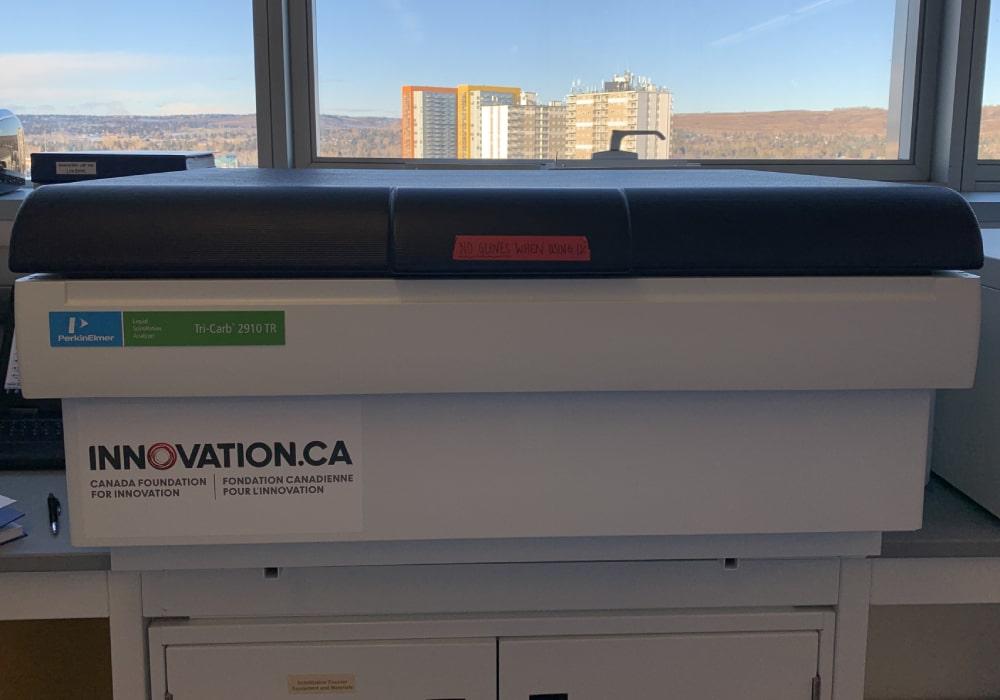
Perkin Elmer Tri-Carb 4910TR Liquid Scintillation Counter
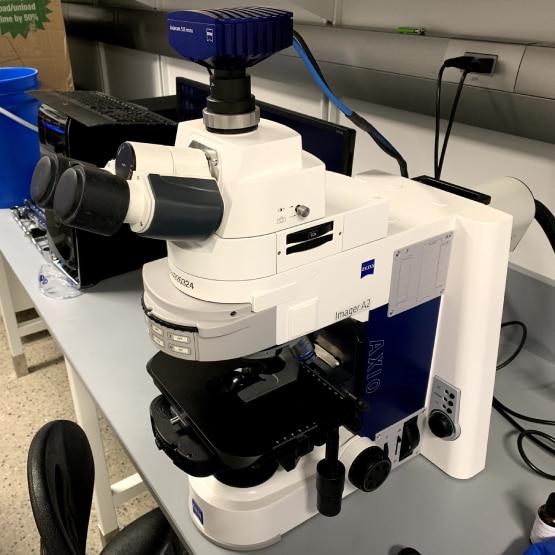
Zeiss Axio Imager A2 Microscope
Microscopy
The microscope is used to visualize bacteria and protists in bioprocess samples. It is equipped with bright field, differential interference contrast microscopy (DIC), fluorescence and several filtersets and a sensitive digital camera. It can also be combined with labeled molecular probes for fluorescence in situ hybridization (FISH and/or CARD-FISH).
Special Equipment
The ultrasonic bath is a common technique for ultrasonic extraction procedures and high-quality cleaning. This equipment uses high-frequency, high-intensity sound waves in a liquid to facilitate or enhance the movement of particles from surfaces submerged in an ultrasonically activated liquid.
Our vinyl anaerobic chamber eliminates oxygen to 0-5 parts per million (ppm) using a hydrogen gas mix reacting with a palladium catalyst to remove oxygen by forming a water molecule. A vacuum airlock is used to reduce oxygen levels prior to transfer of samples and tools in and out of the glove box.
The PIPETMAX is an automated pipetting machine for efficient processing of high-throughput biological assays. It helps improve the accuracy, reproducibility, and consistency during sample processing.
Freeze drying is a water removal process by sublimation of ice from frozen material at reduced pressure and requires storage in an inert atmosphere either under vacuum or at atmospheric pressure in an inert gas. The freeze dryer is an important piece of equipment in sample preparation and for the preservation and storage of biological samples, including proteins, plasma, viruses, and cell lines. The nondestructive nature of this process has been demonstrated by the retention of viability in freeze dried viruses and microorganisms.
The microcalorimeter consists of a highly precise thermostat that maintains the stable temperatures within a 1 microkelvin range. Continuous bioprocesses can be operated within the thermostat and heat production can be measured with extremely high sensitivity and accuracy.
Our specially designed one-of-a-kind temperature gradient blocks generate a gradient which can be used to determine the maximum, optimum, and minimum temperatures of growth for microorganisms. By establishing a gradient, multiple microcosms or reaction mixtures held in wells on the gradient block can be simultaneously run at temperatures that differ only slightly, thereby permitting an optimum temperature for your experiment. The gradient block temperatures can be set to as low as -25°C to a maximum of 120°C. There are 47 lateral wells for 47 individual temperature points and 6 vertical wells per temperature point to create accurate replicates.
The muffle furnace is widely used in laboratories with means to create a high-temperature up to 1200°C. It is ideal for ashing most types of organic and inorganic samples. The furnace is an oven type instrument that achieves its high-temperature on the basis of the insulating material which is fitted inside the chamber. The insulation acts as a muffle and stops the heat from escaping. It is mainly used to determine volatile organic solids and ash contents of biological samples.
The speed-vac is used to concentrate small-volume samples. Under vacuum (very low pressure), the vapor-liquid equilibrium of the solvent is shifted towards the gas phase, while the sample (DNA, peptide, etc.) remains primarily in the solid phase. Using a vacuum solvent can be easily removed with very little stress on the solute, leaving a dry, solid sample (plus salts that were present in the solvent buffer, etc.). Speed vac concentration systems use a technique that combines centrifugal force, vacuum, and applied heat to eliminate sample bumping and foaming.
The ultracentrifuge is used for density gradients such as percol (to separate individual cells) or cesium chloride (to separate labeled DNA in stable isotope probing applications). It is also used to separate viral particles to characterize the virome with next generation sequencing. Spinning up to 100,000 rpm, the ultracentrifuge delivers the speed and performance required for these high performance applications.
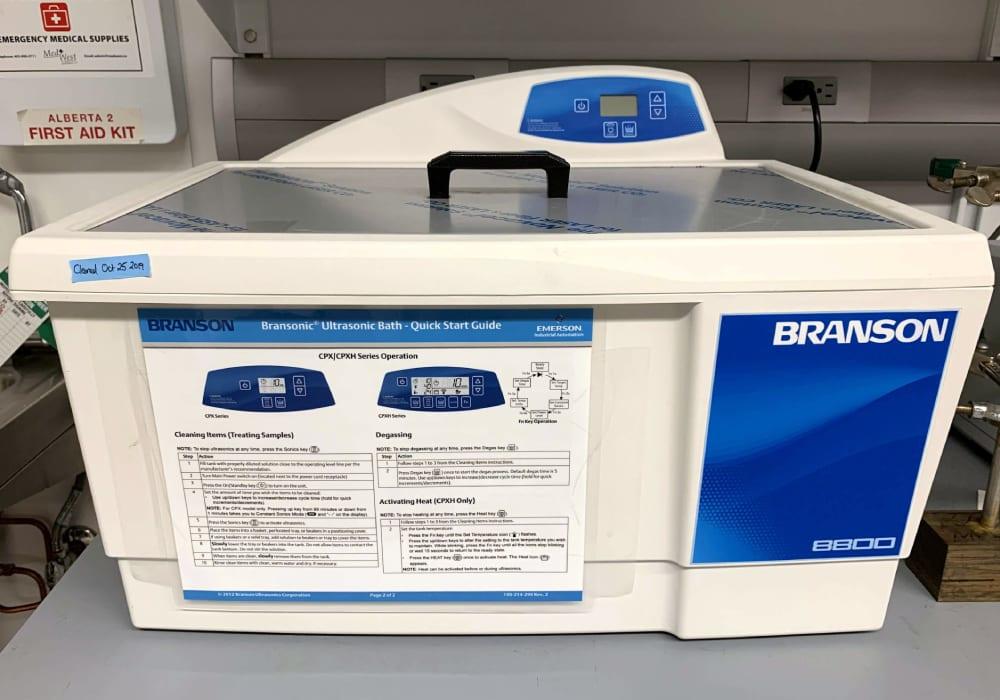
Branson 8800 Ultrasonic Cleaner
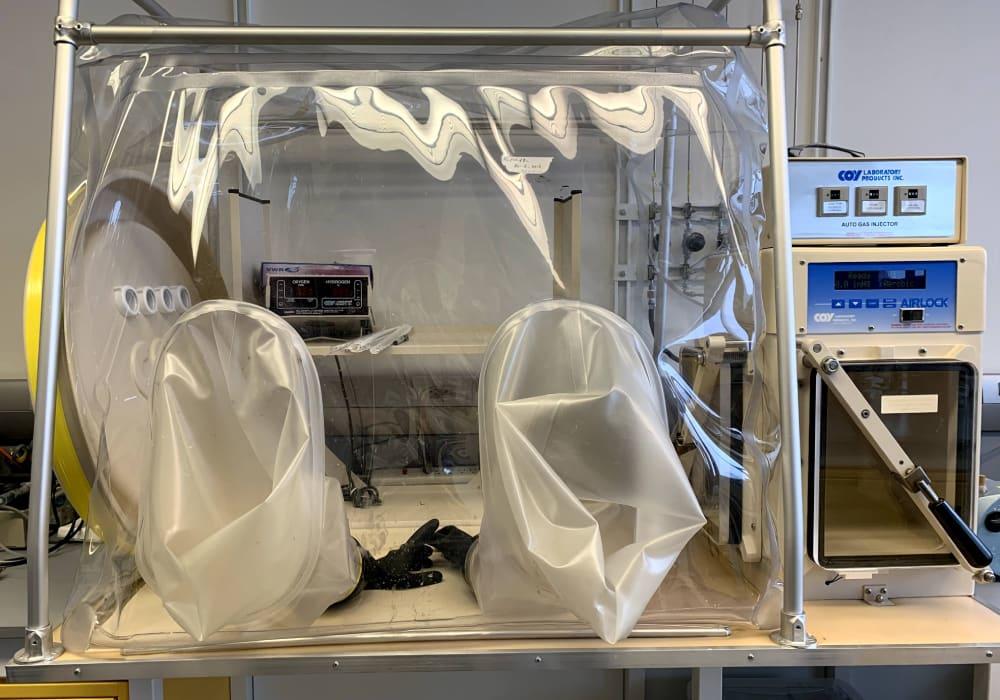
Coy Laboratory Vinyl Anaerobic Chamber
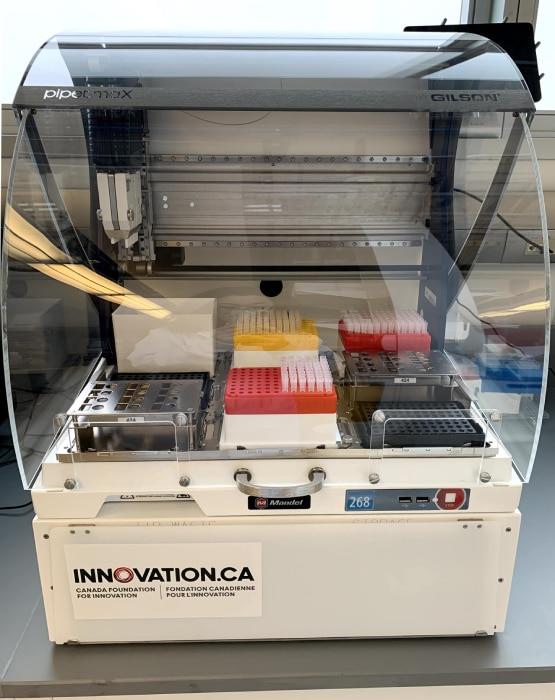
Gilson PIPETTEMAX
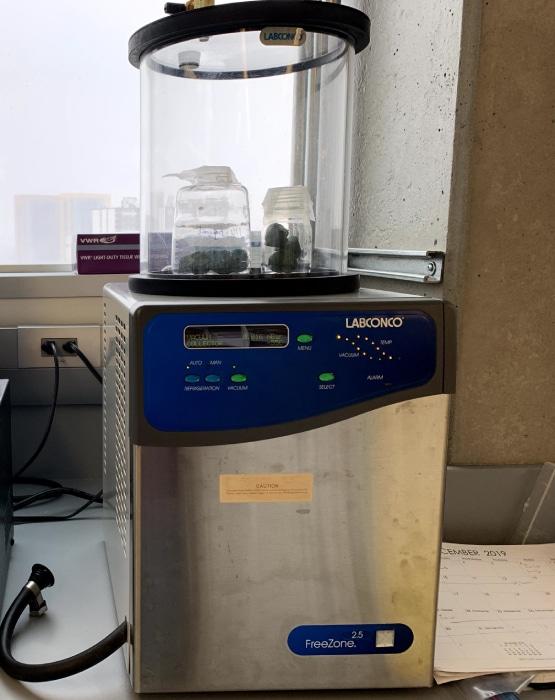
Labconco Freezone 2.5 Litre Benchtop Freeze Dry System
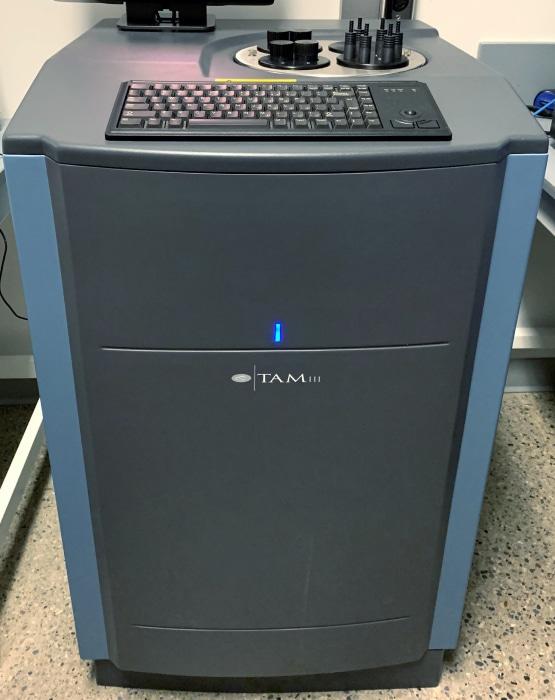
TA Instruments TAM III Microcalorimetric System
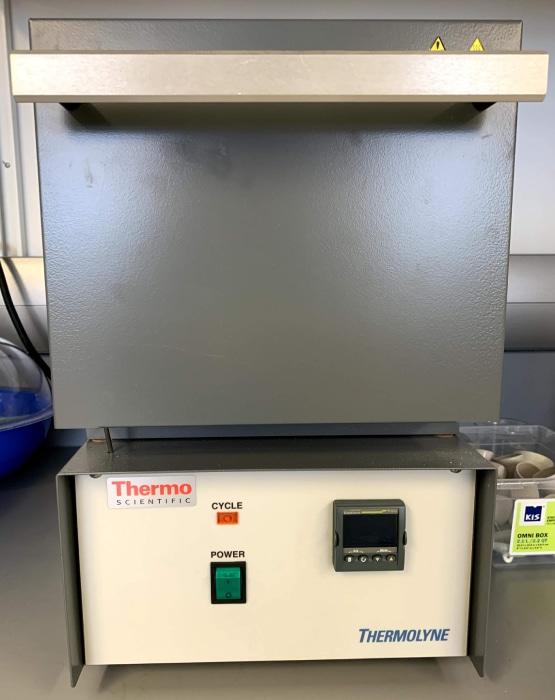
Thermolyne Benchtop Muffle Furnace
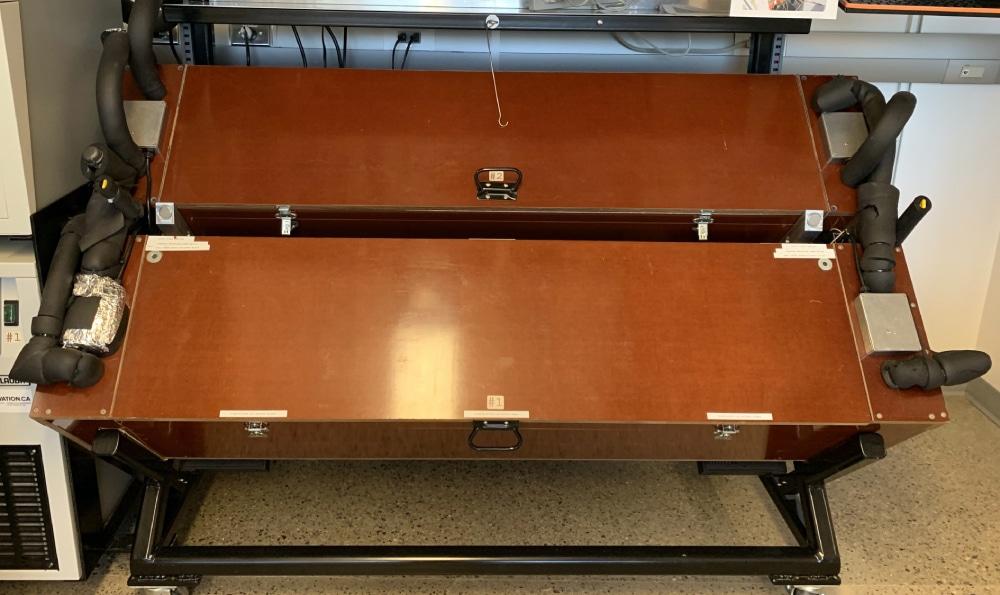
Temperature Gradient Blocks
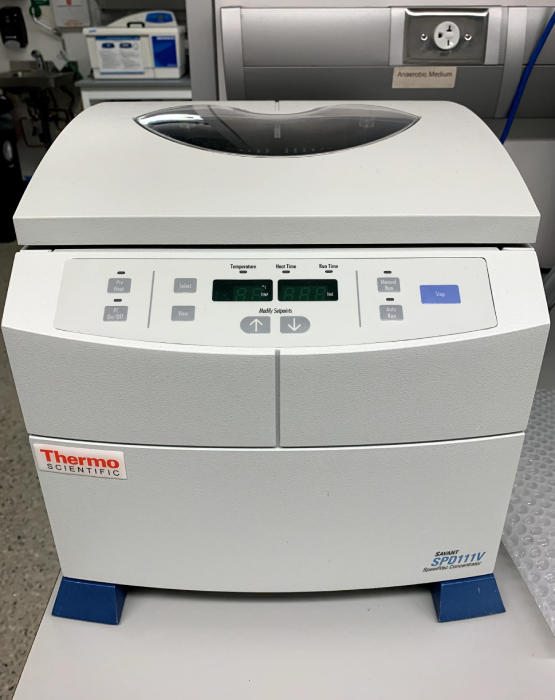
Thermo Scientific Savant SPD111V SpeedVac Concentrator
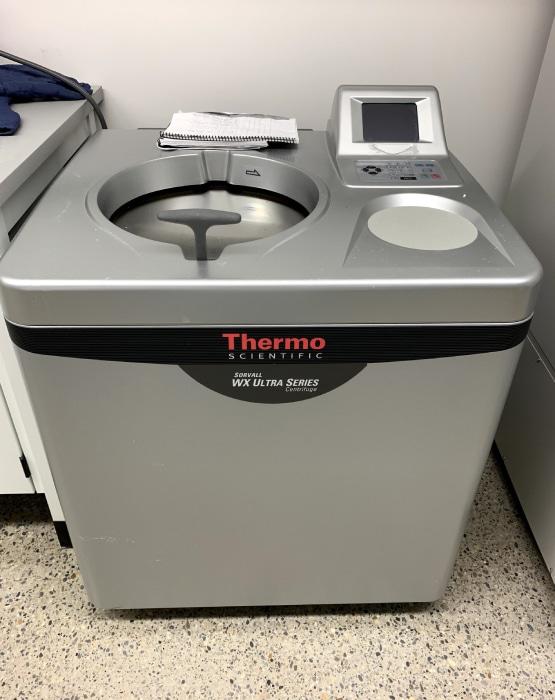
Thermo Scientific Sorvall WX Ultracentrifuge
General Laboratory Equipment
Biological safety cabinets (BSCs) are among one of the most effective primary containment devices used in laboratories working with sensitive agents. They act as primary barriers to prevent the escape of biological aerosols into the laboratory environment. When used correctly, BSCs are designed to provide personnel, environmental, and sample protection. BSCs rely on directional movement of air to provide containment from contaminants.
This station, designed in-house, is used to set a custom headspace for biological incubations in gas-tight bottles. The station is equipped with multiple gasses, including argon, carbon dioxide, nitrogen, methane, hydrogen, and several gas mixes. The gassing station is primarily used to exchange the gas headspace in microcosms. The system is also fitted with a vacuum pump to allow for multiple filling, removal, and flushing steps.
Our thermo mixer is for heating, cooling, and mixing almost any of your lab vessels. It comes with quick and easy-to-exchange SmartBlocks for all common lab vessels, new program functions, and a high level of stability for every mixing frequency.
Our labs are equipped with multiple incubators to provide a controlled, contaminant-free environment for safe, reliable work with cell and tissue cultures by regulating conditions such as temperature, humidity, and CO2. Incubators of different sizes are located throughout the labs, with incubation temperatures going as high as 220°C. We also have 2 low-temperature incubators that can be set to -10°C.
Our multiple peristaltic pumps can be used to pump clean/sterile or aggressive fluids without exposing those fluids to contamination from exposed pump contents. The pumping action results from alternative compression and relaxation of the tubing that is fixed in the machine. The pumped fluid is in contact only with the inner walls of the hose.
The Milli-Q water dispenser delivers the highest quality ultrapure water for all your applications. Pure water first enters the Q-Gard purification cartridge then passes through a long-life dual wavelength UV lamp, which ensures organic molecule degradation using photo-oxidation. Total organic carbon levels are >3 ppb. Next, the Quantum polishing cartridge removes ionic and organic contaminants below trace levels typically 28.2 MΩ cm @ 25 ̊C. Finally, the ultrapure water recirculates through a loop to the Q-POD unit, where an Application-Pak removes particulate contaminants down to 0.2 µm.
The autoclave is a reliable steam sterilizer machine designed for fast and efficient sterilization of heat- and moisture-stable materials used in the laboratory. The autoclave is designed to process loads at temperatures ranging from 110°C to 141°C. Gravity or liquid cycles can be programmed by the user.
There are multiple benchtop shakers used to mix, blend, or agitate substances in a tube or flask by circularly shaking them. The MaxQ series has variable speed control from 15-500 rpm and can operate in temperature ranges of 0°C to 80°C. The orbital shakers can be used in a variety of incubators, warm rooms, environmental chambers, and refrigerators.
Labs are equipped with multiple general purpose water baths designed to maintain water temperature from ambient to 100°C with control of ± 0.1°C increments. The high-performance baths range from 5L to 89L to accommodate a variety of samples. Water baths have an over-temperature safety circuitry design to prevent thermal runaway.
